Green is the color of forests and the plains after rain. It’s a vibrant color that’s beloved by much of humanity, reminding us of the tranquility of nature. So, it’s no surprise that learning about green stones can help prospective rockhounds expand their collection. And there are a lot of green rocks and minerals found in nature.
Let’s take a look at some of the different types of green rocks, gems, and minerals to give you a sample of nature’s special gemstones.
Green Rocks and Minerals
1. Emerald
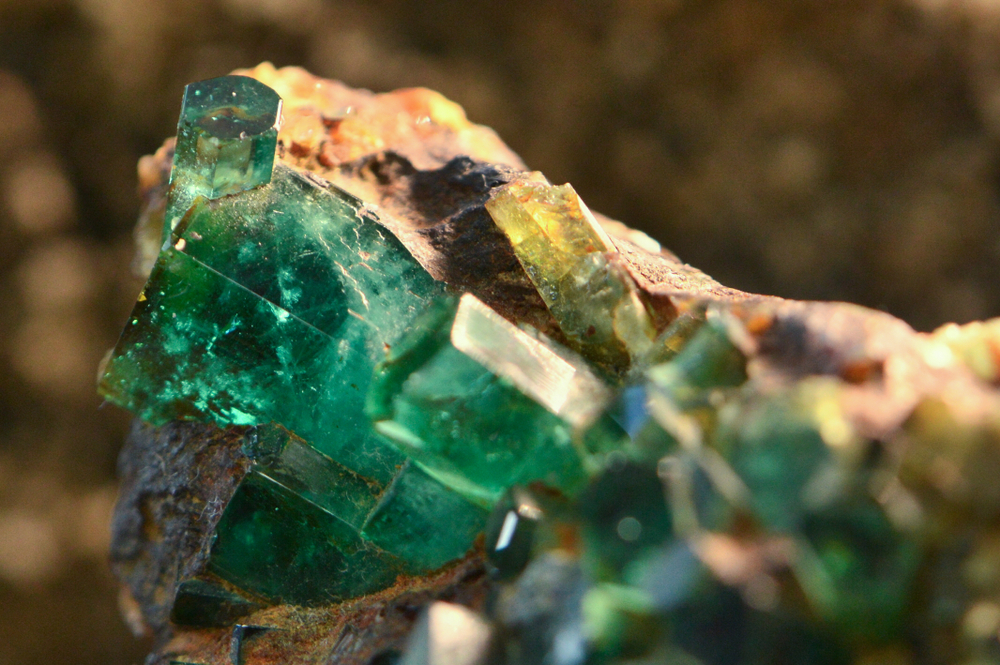
Emerald is the most famous of the green gemstones. Vibrant and once described by the ancients as “more green than green”, emeralds are a strange gemstone. Among their various quirks is the fact that virtually all emeralds are heavily included, creating an internal wonderland that many enjoy. There’s even a name for these complex inclusions: Jardin.
Emeralds are colored by chrome. The beryl family is home to many people’s favorite gemstones, featuring things like morganite and aquamarine. Emeralds themselves actually aren’t that rare, but finding them with enough clarity to be cut into faceted gemstones is rare. Samples of low-grade emeralds are plentiful and relatively cheap.
Emeralds are the archetypical green precious gem. Hard, resilient, and filled with a natural beauty they’re most often found in high-end jewelry. Whether it’s a high-grade emerald ring or just a low-grade crystal, however, it’s easy to see why emerald has become a synonym for the greenest of greens.
2. Chrome Diopside
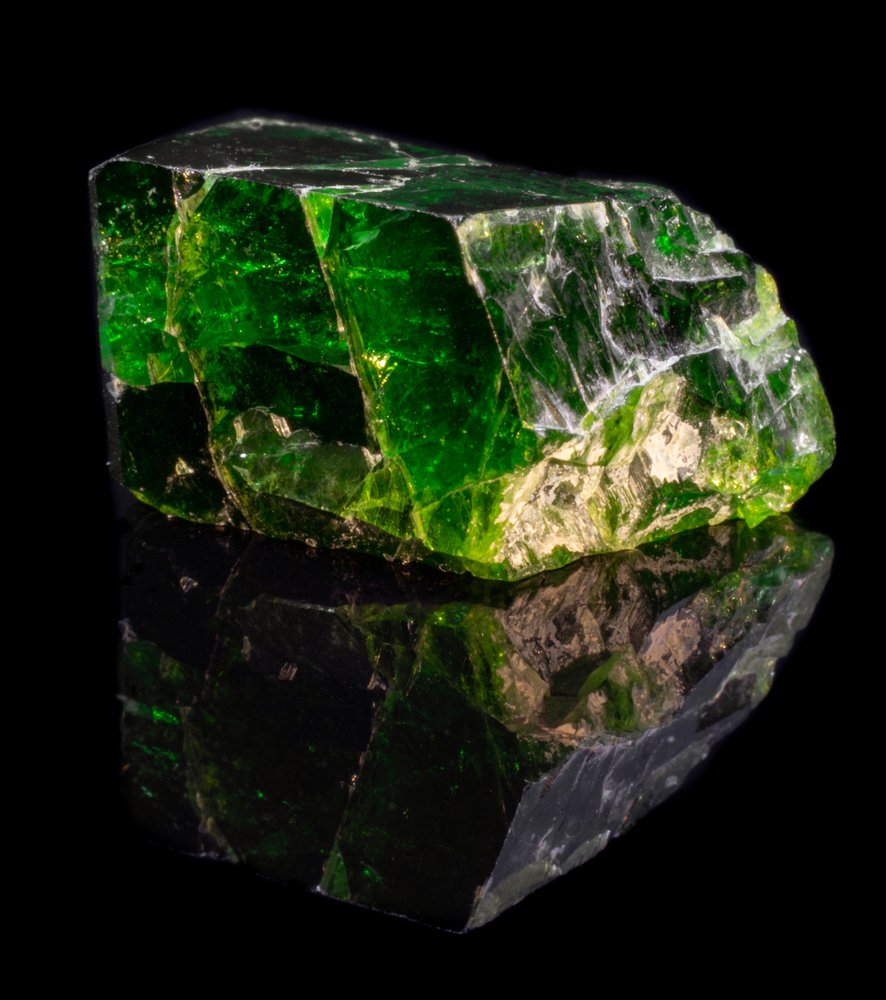
Chrome diopside may as well be the poor man’s emerald. This bright green stone often features remarkable clarity and displays a near-match for the deep green that emeralds are known for. For jewelry lovers there’s another big bonus: it’s also available for a fraction of the cost.
Chrome diopside is only found in certain places in Russia. Currently, the last known viable mine is having trouble supplying the market. The gems aren’t as cheap as they were a few years back, but they’re still more affordable than any equivalent. Gem quality chrome diopside is very rare, with only .1% of the material pulled from the mines being worth faceting.
This gemstone is a bit softer than most of the classics, running a 5-6. That means it should be worn with care, especially when it comes to rings. That said, chrome diopside remains a stunning gemstone and one that’s well worth exploring for collectors.
3. Tsavorite/Demantoid Garnet
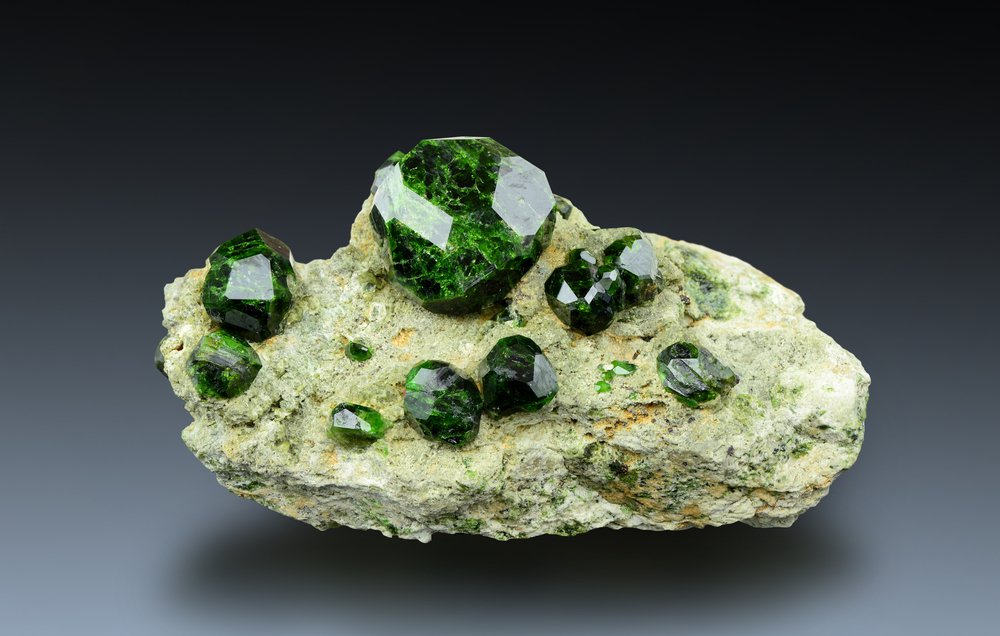
While garnets are often known for their reds, they also produce some amazing green gemstones. Tsavorite and demantoid garnets make up the best of the green parts of the family, with brilliant colors. They’re valued both as collector specimens and as cut gemstones.
Tsavorite garnets are colored by vanadium and chromium. They take the place of other molecules in the color centers of the crystals. Demantoids, on the other hand, are colored only by chromium. This results in slightly different colors, with some tsavorite garnets being a shade of blue-green instead of simply green.
These richly colored garnets are well-known these days but stayed hidden for much of human history. Oddly, both of these gemstones can be found both in Russia and Africa. A strange geological dispersion to say the least. But the good news is that we’ve found them and can enjoy these brilliant crystals.
4. Peridot
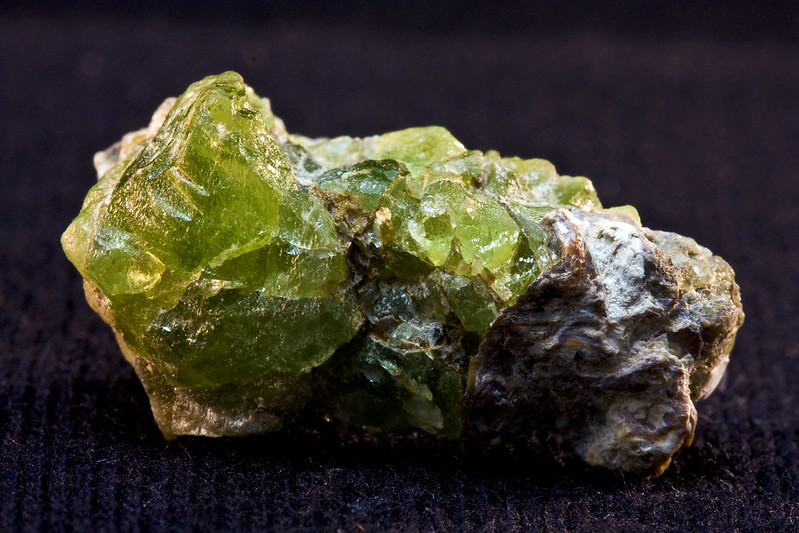
Peridot has been with humanity for a long time. Ever since the first deposit was uncovered by ancient Egyptians who called it “the stone of the Sun”. The stone itself runs from olive to bright green, with prices varying wildly based on clarity and coloration.
Peridot also has the distinction of occasionally falling from the sky. Pallasite meteorites are filled with olivine, the base mineral of peridot, in combination with a nickel-iron alloy. On occasion, some of this olivine is even high enough grade for cutting, creating one of the rarest gemstones on the planet.
Peridot has a perennial place in humanity’s heart. From the ancient Egyptians to the weird gem market manipulation mechanism we call “birthstones” peridot constantly shows its face. That alone makes it worth investigating before we get to the incredible beauty. Peridot is a stone to remember.
5. Jade

There are two main forms of jade. They are jadeite and nephrite. Nephrite jade is the classic green that’s closely associated with Chinese artifacts, while jadeite is newer to the scene. The two can be hard to tell apart for a beginner, but they’re both referred to as jade.
The difference is in the crystal and chemical formations. Jadeite is a fine-grained sodium aluminum silicate. It forms in masses, but the pure mineral is sometimes found crystallized in interior vugs. It’s harder and denser than nephrite jade, but not quite as tough due to the crystal structure.
Nephrite, on the other hand, is a calcium magnesium iron silicate that forms tough, fiber-like crystals. This structure lends itself well to carving and it’s the classic jade of China and the Maori people. Nephrite jade is more common by far, but often lacks the clarity and high color of the best samples of jadeite.
Both forms of jade are beautiful. At their best, they can rival emeralds in their color and clarity. Jade is one of the oldest stones to still be with humanity and countless beautiful artifacts made of it are spread across the globe. Chances are that people will continue to love and work with jade for a long time to come.
6. Malachite
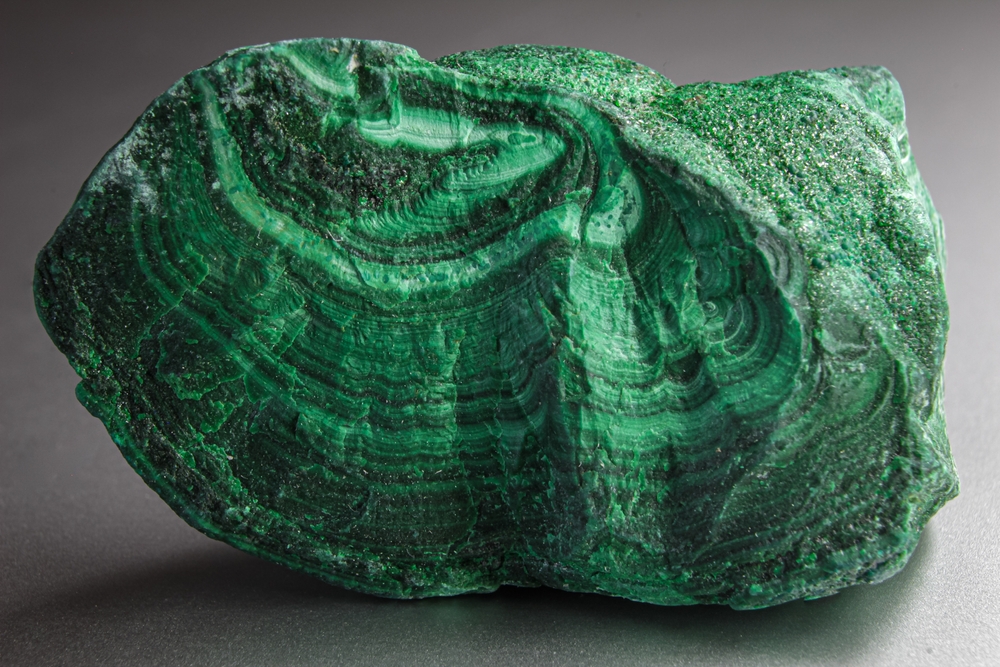
Malachite is one of the iconic green stones. It’s actually an important copper ore as well, but the beauty of the stone has made it a timeless classic for decorative and jewelry use. Malachite can be an expensive stone, enough that there’s a counterfeit market for it. Still, the fakes are readily discernable to the practiced eye.
Malachite occurs in many forms, but the one most of us are familiar with is the botryoidal formations. These spheres of malachite gather together to form a mass of stone “bubbles” conglomerated together. When cut, they reveal the interior’s bands of color and brilliant patterns.
Malachite has long been a favorite for stone collectors, and that isn’t likely to change. It’s even made its way into some of the world’s most famous museums, such as the Malachite Room at the Hermitage in Russia. That’s a victory for a stone that was mainly destroyed for its copper content in the past.
7. Serpentine
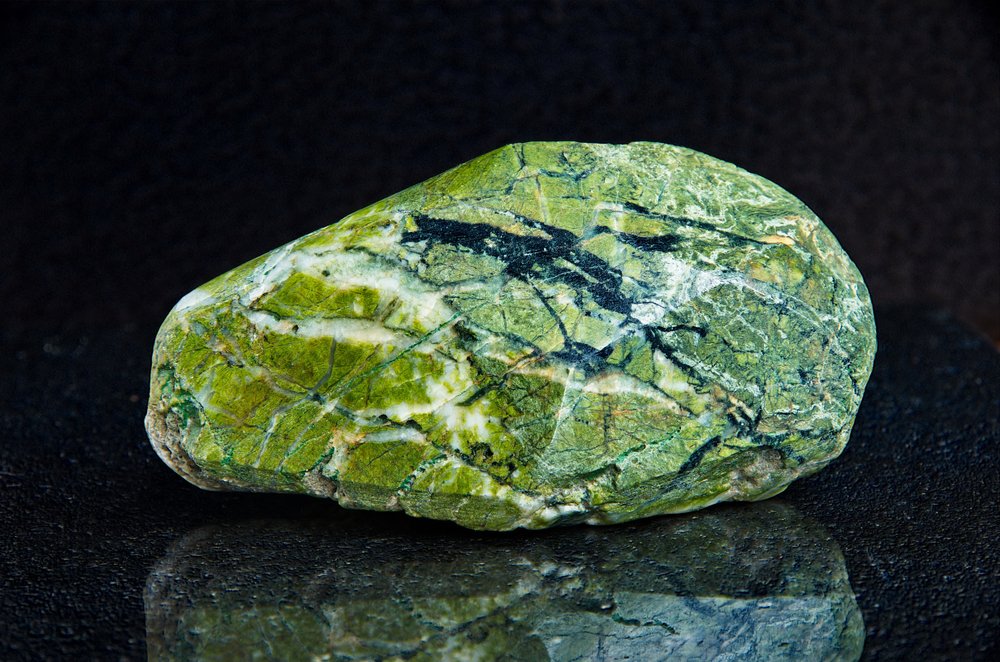
Serpentine is another common green stone. The lower grades are of little interest, but the higher grades of serpentine have been used as a lapidary substitute for nephrite jade in the past. Some people still confuse the two, but they’re quite different in chemical composition and crystal structure.
Serpentine is actually a fibrous mineral and one that some are nervous to cut. The reason is that serpentine contains asbestos. Specifically, it contains a variety of asbestos known as chrysotile. A particle mask is a requirement when cutting serpentine, but you should be wearing one anyways when cutting any stone. The stone itself varies widely in grade, from crumbly green pebbles to solid, semi-translucent masses that closely mimic good jade.
Overall, serpentine is an interesting specimen for both industrial and artistic reasons. It’s a close mimic of jade and was an important mineral for the production of asbestos. It’s also important to understand its nature to avoid buying counterfeit “jade” for a new collector.
8. Aventurine
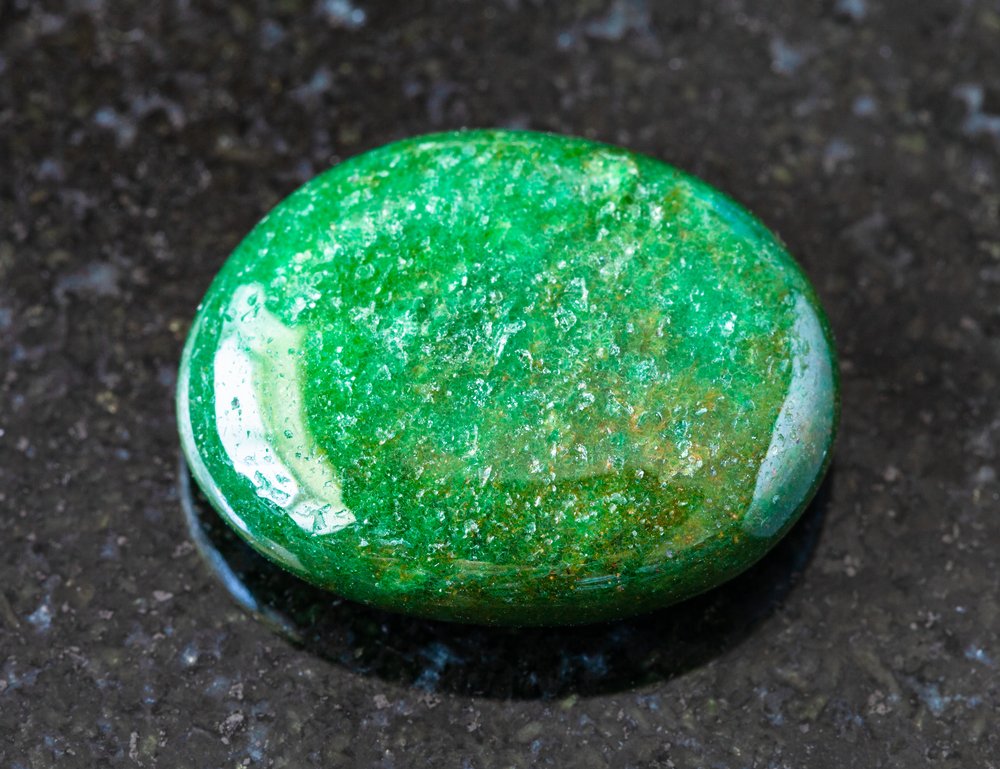
Aventurine is a green variety of quartz, separate from prasiolite. Instead of simply being green quartz, aventurine has depth and a sparkling effect across the surface of the stone from the inclusions. This sparkle has been aptly named… aventurescence. Aventurine seems to be the first stone to display the shimmer, so it received the name.
The majority of aventurine is mediocre material. It ends up being cut into beads or small figurines for both the export and the tourist market. The majority of green aventurine comes out of India. The best examples are sometimes cut into cabochons, which is the best way to display the glittery optical effect in the stone.
Aventurine is common and cheap on the stone market, but it’s still a gorgeous stone. The unique optical effect makes it a favorite of collectors. Other varieties than green exist, but they’re far rarer and hail from different places. As things stand, aventurine is one of the most common green stones, but that doesn’t change the fact that it’s also among the most beautiful.
9. Chrome Tourmaline
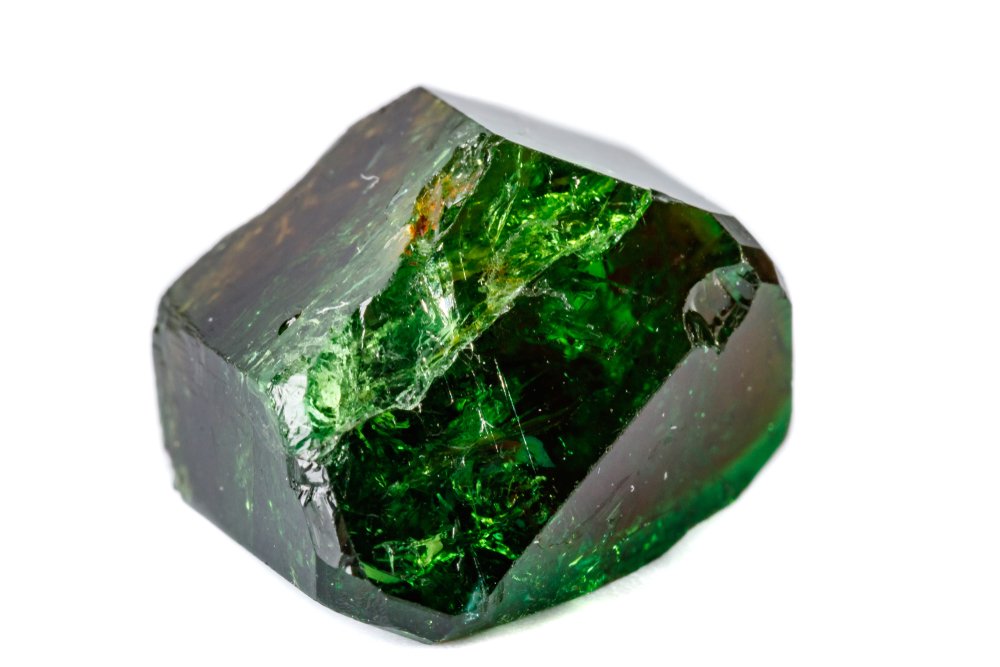
Chrome tourmaline is an incredible variety of tourmaline, with high clarity and a deep green color that’s nearly a match for emeralds. Indeed, it may actually be a match for emeralds as distinguishing between good chrome tourmaline and emerald requires specialized testing and equipment.
While tourmaline comes in many shades of green, most of them are a lot weaker than the color gifted by the chromium in this stone. Olive green, for instance, is very common in tourmaline but the color is unrelated. Chrome tourmaline would be an excellent emerald counterfeit… if it weren’t worth about the same as emeralds per carat.
Tourmaline is a fascinating stone in its own right. There are endless colors available, but those with extreme saturation such as indicolite, rubellite, and chrome tourmaline are prized by collectors. The exceptionally deep color puts this stone in its own class, however.
10. Prasiolite
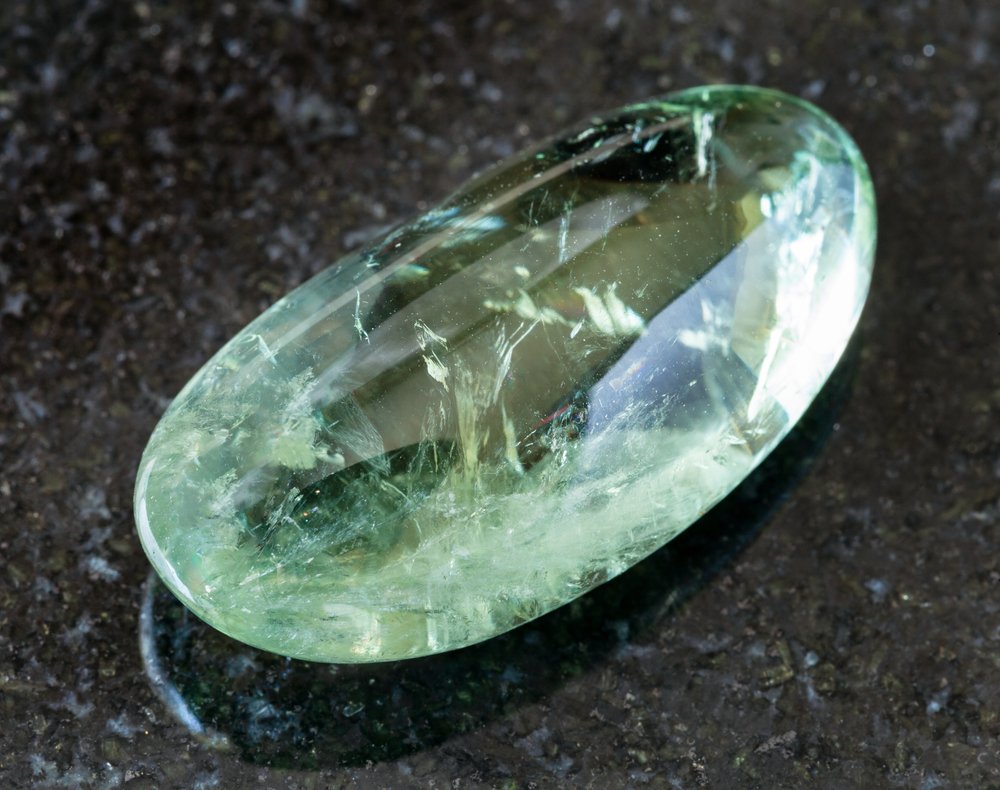
Prasiolite is a rare variant of quartz, mainly found in Brazil. The reason for it’s rarity? The extremely narrow temperature band at which it forms. Prasiolite is an intermediate between the cooler temperatures of amethyst and the warmer temperatures that produce citrine. It has the same iron in its color centers as the other two, but it only forms between 420°C and 440°C (788°F to 824°F).
This narrow temperature range results in a light green color in the quartz crystals. Prasiolite is usually very light in color. In some specimens it can be hard to discern the exact shade, there’s just not a lot of color saturation in even the best examples.
You may see prasiolite sold as “green amethyst” on occasion. That’s not far from the truth, considering the stones are colored by the same iron ions trapped in the crystal lattice. Prasiolite may not be the most beautiful gem, but it’s an interesting and rare find for specimen collectors.
11. Amazonite
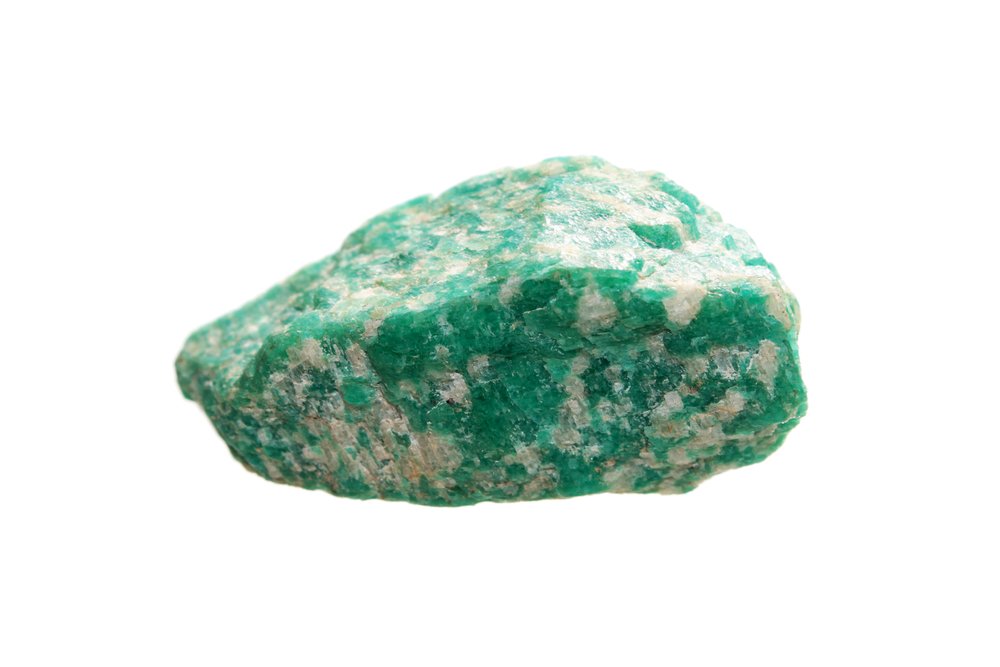
Amazonite is a stone that runs the gamut from blue-green to a deeper electric green. It’s a variety of the monocline family of minerals, forming triclinic crystals that produce some pretty amazing specimens. The stone is often cut for decorative objects and jewelry since it takes good polish once you get past the fractured bits.
The appearance of Amazonite is often mottled with lighter colors, making an interesting visual texture. It’s actually a variety of monoclinic feldspar, a large family in the mineral world. It was a bit of a mystery until recently, with no one being able to pin down the coloring agent. It turns out that it’s owed to trace amounts of lead, rubidium, and thallium in the crystals. Or iron. It’s still up for debate, but it points to a far more complex reason than we find in the majority of stones.
The lead content does mean you probably shouldn’t swallow the stone, but it’s not dangerous. Amazonite is cheap and readily available for collectors. As a bonus, it also occurs in quite a few places in the United States, making it easy to field collect specimens of this exotic rock.
12. Titanite (Sphene)
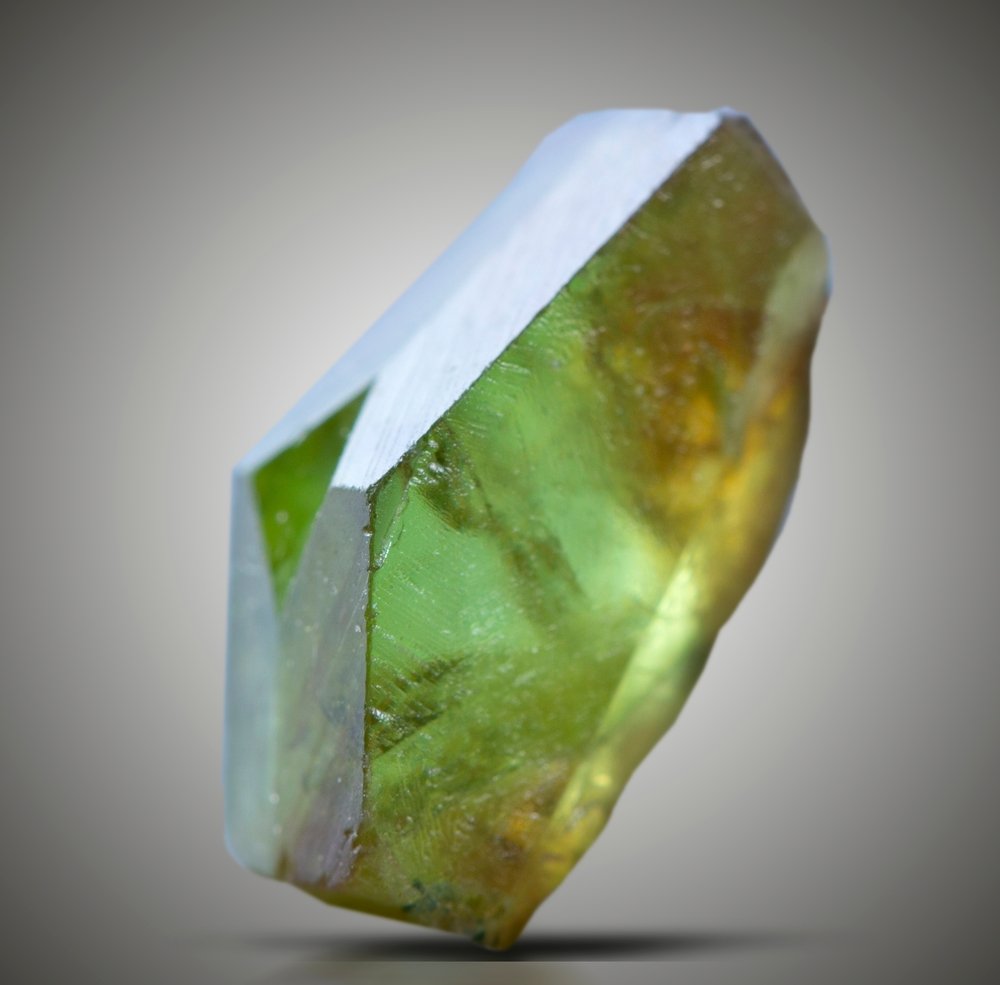
Titanite, or sphene, is a personal favorite of mine. The gemstones and high-end crystals of the material display a scattering of light that’s really unmatched. The stones are olive green in most cases, but when the light hits them right? A world of yellow, orange, and red fire emerges in the stone.
It’s hard to get an accurate picture of how these stones look from pictures. Even video seems to have trouble catching the fire. It’s a calcium titanium neosilicate mineral, and it’s an important source of titanium oxide. TiO₂ is usually used as a white pigment.
The high-grade crystals make incredible gemstones. The reason they’re a bit more obscure is simply due to hardness issues, 5 is a bit low for a gemstone and requires special attention to protect the gem. That said, it’s really hard to describe just how wonderful the internal world of a good piece of titanite is until you’ve held it in your own hands.
13. Fuchsite
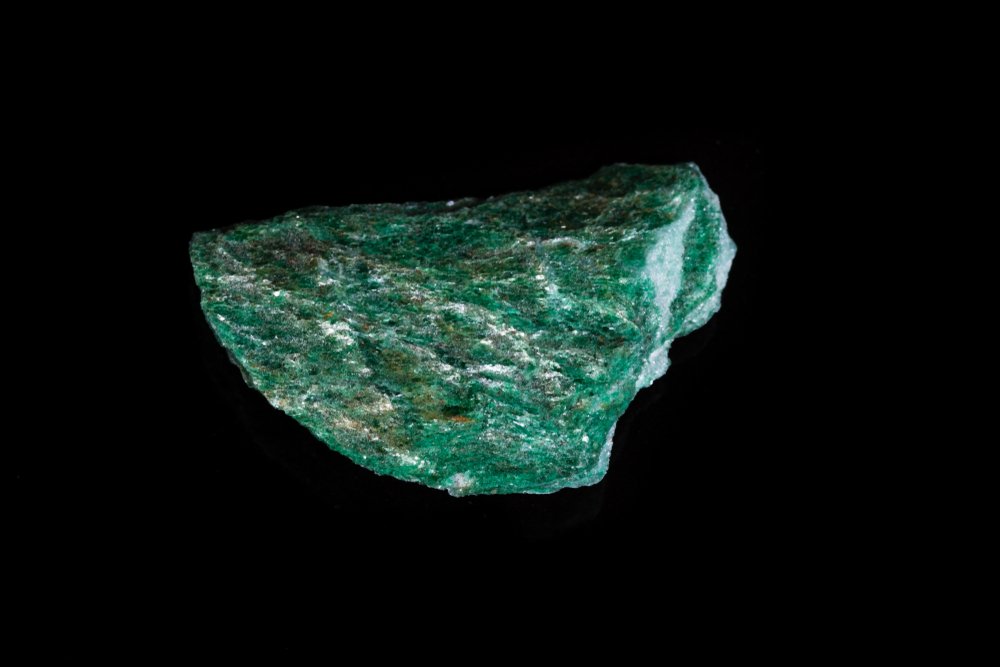
Fuchsite is a green mineral that’s often mixed with others to produce an incredible array of stones. One of the most commonly seen is ruby in fuchsite, which looks quite similar to ruby in zoisite. This can create a wonderful display.
Fuchsite itself is a soft mineral, running a 2-3 on the Moh’s scale. This makes it easy to carve, but it’s not quite suitable for most jewelry. The ruby contained in some specimens is usually ringed with a slightly blue tone. That’s kyanite, and it makes the stone easy to distinguish from zoisite in ruby without having to depend on scratch tests.
Fuchsite is most often seen as a display piece, sometimes polished. While ornamental carvings are often cut from this stone, it’s rarely seen in jewelry. Think of it as a shelf display stone, rather than something to be worn. Fuchsite specimens can be very amazing, and the best are highly sought after.
- Online rock and mineral club for collectors of all levels!
- Find community with like-minded rock and mineral enthusiasts.
- Monthly Giveaways!
- Free Access to Entire Digital Library of Products (annual memberships)


